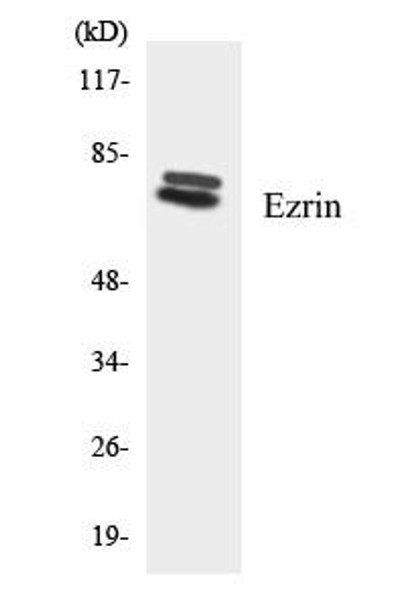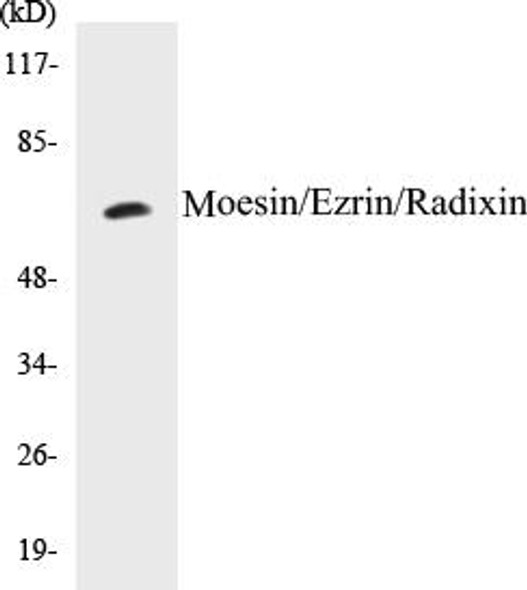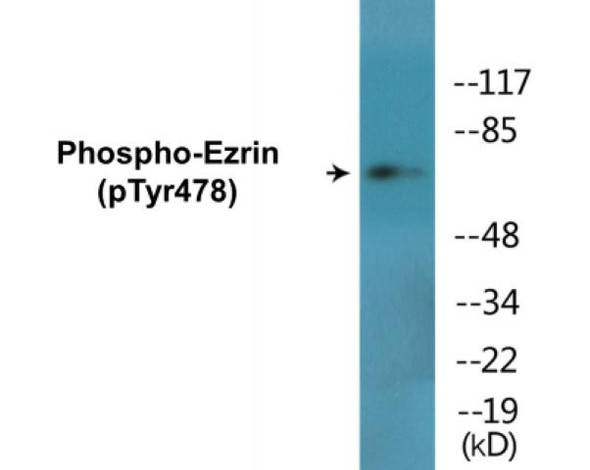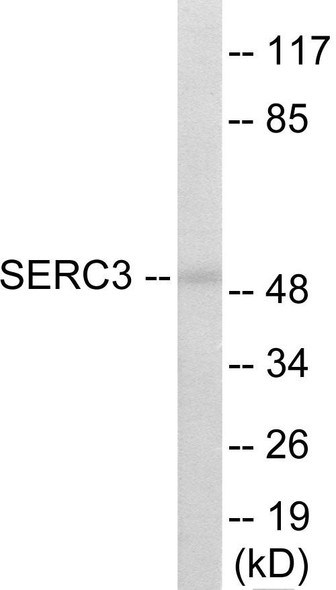Description
Ezrin Colorimetric Cell-Based ELISA
The EZRIN Colorimetric Cell-Based ELISA Kit is a powerful tool for researchers looking to detect and quantify levels of ezrin in cell culture samples. Ezrin is a key protein involved in cell motility and adhesion, making it essential for processes such as cell migration and invasion.This kit offers high sensitivity and specificity, allowing for accurate and reliable results in a variety of research applications.
By measuring ezrin levels, researchers can gain valuable insights into cellular signaling pathways, potential drug targets, and disease mechanisms.Overall, the EZRIN Colorimetric Cell-Based ELISA Kit is an essential tool for any researcher studying cell biology, cancer biology, or other related fields. Its ease of use and robust performance make it a valuable addition to any lab toolkit.
| Product Name: | Ezrin Colorimetric Cell-Based ELISA |
| Product Code: | CBCAB00912 |
| ELISA Type: | Cell-Based |
| Target: | Ezrin |
| Reactivity: | Human, Mouse, Rat |
| Dynamic Range: | > 5000 Cells |
| Detection Method: | Colorimetric 450 nmStorage/Stability:4°C/6 Months |
| Format: | 96-Well Microplate |
The Ezrin Colorimetric Cell-Based ELISA Kit is a convenient, lysate-free, high throughput and sensitive assay kit that can detect Ezrin protein expression profile in cells. The kit can be used for measuring the relative amounts of Ezrin in cultured cells as well as screening for the effects that various treatments, inhibitors (ie siRNA or chemicals), or activators have on Ezrin.
Qualitative determination of Ezrin concentration is achieved by an indirect ELISA format. In essence, Ezrin is captured by Ezrin-specific primary antibodies while the HRP-conjugated secondary antibodies bind the Fc region of the primary antibody. Through this binding, the HRP enzyme conjugated to the secondary antibody can catalyze a colorimetric reaction upon substrate addition. Due to the qualitative nature of the Cell-Based ELISA, multiple normalization methods are needed:
| 1. | A monoclonal antibody specific for human GAPDH is included to serve as an internal positive control in normalizing the target absorbance values. |
| 2. | Following the colorimetric measurement of HRP activity via substrate addition, the Crystal Violet whole-cell staining method may be used to determine cell density. After staining, the results can be analysed by normalizing the absorbance values to cell amounts, by which the plating difference can be adjusted. |
| Database Information: | Gene ID: 7430, UniProt ID: P15311, OMIM: 123900, Unigene: Hs.487027 |
| Gene Symbol: | EZR |
| Sub Type: | None |
| UniProt Protein Function: | Ezrin: a member of the ERM family which includes radixin and moesin. ERM proteins appear to function as cross-linkers between plasma membranes and actin-based cytoskeletons. Plays a key role in cell surface structure adhesion, migration, and organization. |
| UniProt Protein Details: | Protein type:Motility/polarity/chemotaxis; Cytoskeletal Chromosomal Location of Human Ortholog: 6q25.3 Cellular Component: cortical cytoskeleton; extracellular space; microvillus; focal adhesion; basolateral plasma membrane; T-tubule; actin filament; cytosol; lipid raft; actin cytoskeleton; ruffle; extrinsic to membrane; membrane; apical part of cell; microvillus membrane; apical plasma membrane; nucleolus; plasma membrane; uropod; vesicle; filopodium Molecular Function:actin filament binding; protein domain specific binding; protein binding; cell adhesion molecule binding Biological Process: actin filament bundle formation; axon guidance; microvillus biogenesis; regulation of cell shape; leukocyte adhesion; filopodium formation; cytoskeletal anchoring; receptor internalization; membrane to membrane docking; establishment of epithelial cell polarity |
| NCBI Summary: | The cytoplasmic peripheral membrane protein encoded by this gene functions as a protein-tyrosine kinase substrate in microvilli. As a member of the ERM protein family, this protein serves as an intermediate between the plasma membrane and the actin cytoskeleton. This protein plays a key role in cell surface structure adhesion, migration and organization, and it has been implicated in various human cancers. A pseudogene located on chromosome 3 has been identified for this gene. Alternatively spliced variants have also been described for this gene. [provided by RefSeq, Jul 2008] |
| UniProt Code: | P15311 |
| NCBI GenInfo Identifier: | 125987826 |
| NCBI Gene ID: | 7430 |
| NCBI Accession: | P15311.4 |
| UniProt Secondary Accession: | P15311,P23714, Q4VX75, Q96CU8, Q9NSJ4, E1P5A8, |
| UniProt Related Accession: | P15311 |
| Molecular Weight: | 586 |
| NCBI Full Name: | Ezrin |
| NCBI Synonym Full Names: | ezrin |
| NCBI Official Symbol: | EZR |
| NCBI Official Synonym Symbols: | CVL; CVIL; VIL2; HEL-S-105 |
| NCBI Protein Information: | ezrin; p81; villin-2; cytovillin 2; villin 2 (ezrin); epididymis secretory protein Li 105 |
| UniProt Protein Name: | Ezrin |
| UniProt Synonym Protein Names: | Cytovillin; Villin-2; p81 |
| Protein Family: | Ezrin |
| UniProt Gene Name: | EZR |
| UniProt Entry Name: | EZRI_HUMAN |
| Component | Quantity |
| 96-Well Cell Culture Clear-Bottom Microplate | 2 plates |
| 10X TBS | 24 mL |
| Quenching Buffer | 24 mL |
| Blocking Buffer | 50 mL |
| 15X Wash Buffer | 50 mL |
| Primary Antibody Diluent | 12 mL |
| 100x Anti-Phospho Target Antibody | 60 µL |
| 100x Anti-Target Antibody | 60 µL |
| Anti-GAPDH Antibody | 60 µL |
| HRP-Conjugated Anti-Rabbit IgG Antibody | 12 mL |
| HRP-Conjugated Anti-Mouse IgG Antibody | 12 mL |
| SDS Solution | 12 mL |
| Stop Solution | 24 mL |
| Ready-to-Use Substrate | 12 mL |
| Crystal Violet Solution | 12 mL |
| Adhesive Plate Seals | 2 seals |
The following materials and/or equipment are NOT provided in this kit but are necessary to successfully conduct the experiment:
- Microplate reader able to measure absorbance at 450 nm and/or 595 nm for Crystal Violet Cell Staining (Optional)
- Micropipettes with capability of measuring volumes ranging from 1 µL to 1 ml
- 37% formaldehyde (Sigma Cat# F-8775) or formaldehyde from other sources
- Squirt bottle, manifold dispenser, multichannel pipette reservoir or automated microplate washer
- Graph paper or computer software capable of generating or displaying logarithmic functions
- Absorbent papers or vacuum aspirator
- Test tubes or microfuge tubes capable of storing ≥1 ml
- Poly-L-Lysine (Sigma Cat# P4832 for suspension cells)
- Orbital shaker (optional)
- Deionized or sterile water
*Note: Protocols are specific to each batch/lot. For the correct instructions please follow the protocol included in your kit.
| Step | Procedure |
| 1. | Seed 200 µL of 20,000 adherent cells in culture medium in each well of a 96-well plate. The plates included in the kit are sterile and treated for cell culture. For suspension cells and loosely attached cells, coat the plates with 100 µL of 10 µg/ml Poly-L-Lysine (not included) to each well of a 96-well plate for 30 minutes at 37°C prior to adding cells. |
| 2. | Incubate the cells for overnight at 37°C, 5% CO2. |
| 3. | Treat the cells as desired. |
| 4. | Remove the cell culture medium and rinse with 200 µL of 1x TBS, twice. |
| 5. | Fix the cells by incubating with 100 µL of Fixing Solution for 20 minutes at room temperature. The 4% formaldehyde is used for adherent cells and 8% formaldehyde is used for suspension cells and loosely attached cells. |
| 6. | Remove the Fixing Solution and wash the plate 3 times with 200 µL 1x Wash Buffer for five minutes each time with gentle shaking on the orbital shaker. The plate can be stored at 4°C for a week. |
| 7. | Add 100 µL of Quenching Buffer and incubate for 20 minutes at room temperature. |
| 8. | Wash the plate 3 times with 1x Wash Buffer for 5 minutes each time. |
| 9. | Add 200 µL of Blocking Buffer and incubate for 1 hour at room temperature. |
| 10. | Wash 3 times with 200 µL of 1x Wash Buffer for 5 minutes each time. |
| 11. | Add 50 µL of 1x primary antibodies (Anti-Ezrin Antibody and/or Anti-GAPDH Antibody) to the corresponding wells, cover with Parafilm and incubate for 16 hours (overnight) at 4°C. If the target expression is known to be high, incubate for 2 hours at room temperature. |
| 12. | Wash 3 times with 200 µL of 1x Wash Buffer for 5 minutes each time. |
| 13. | Add 50 µL of 1x secondary antibodies (HRP-Conjugated AntiRabbit IgG Antibody or HRP-Conjugated Anti-Mouse IgG Antibody) to corresponding wells and incubate for 1.5 hours at room temperature. |
| 14. | Wash 3 times with 200 µL of 1x Wash Buffer for 5 minutes each time. |
| 15. | Add 50 µL of Ready-to-Use Substrate to each well and incubate for 30 minutes at room temperature in the dark. |
| 16. | Add 50 µL of Stop Solution to each well and read OD at 450 nm immediately using the microplate reader. |
(Additional Crystal Violet staining may be performed if desired – details of this may be found in the kit technical manual.)






